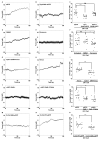Notch ligand endocytosis generates mechanical pulling force dependent on dynamin, epsins, and actin
- PMID: 22658936
- PMCID: PMC3400432
- DOI: 10.1016/j.devcel.2012.04.005
Notch ligand endocytosis generates mechanical pulling force dependent on dynamin, epsins, and actin
Abstract
Notch signaling induced by cell surface ligands is critical to development and maintenance of many eukaryotic organisms. Notch and its ligands are integral membrane proteins that facilitate direct cell-cell interactions to activate Notch proteolysis and release the intracellular domain that directs Notch-specific cellular responses. Genetic studies suggest that Notch ligands require endocytosis, ubiquitylation, and epsin endocytic adaptors to activate signaling, but the exact role of ligand endocytosis remains unresolved. Here we characterize a molecularly distinct mode of clathrin-mediated endocytosis requiring ligand ubiquitylation, epsins, and actin for ligand cells to activate signaling in Notch cells. Using a cell-bead optical tweezers system, we obtained evidence for cell-mediated mechanical force dependent on this distinct mode of ligand endocytosis. We propose that the mechanical pulling force produced by endocytosis of Notch-bound ligand drives conformational changes in Notch that permit activating proteolysis.
Copyright © 2012 Elsevier Inc. All rights reserved.
Figures






References
Publication types
MeSH terms
Substances
Grants and funding
LinkOut - more resources
Full Text Sources
Other Literature Sources
Molecular Biology Databases

